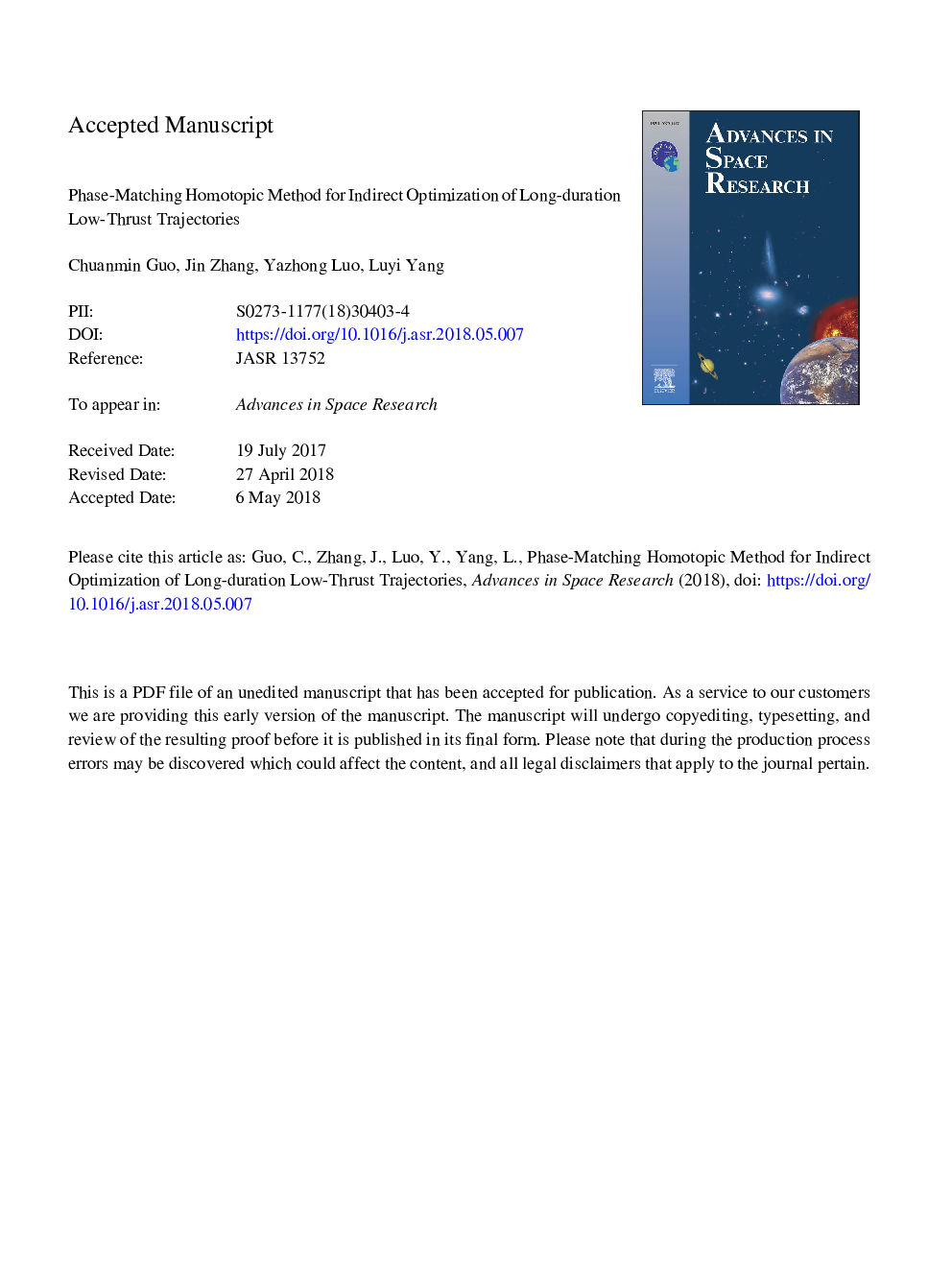| Article ID | Journal | Published Year | Pages | File Type |
|---|---|---|---|---|
| 8131719 | Advances in Space Research | 2018 | 22 Pages |
Abstract
For low-thrust trajectory designs, indirect optimization methods remain attractive, as they can guarantee optimality. Previous studies presented many effective ways to overcome the problems in the indirect optimization process, but they still suffer from the initialization difficulty and numerical instability for the long-duration many-revolution problems. A method with three major steps is proposed to conquer those difficulties. First, the original trajectory with the energy objective function is divided into multiple phases with relatively short time of flight by several trials of indirect optimization. Second, the number of phases is reduced by a smoothing procedure, and the whole trajectory with multiple phases is now improved to be close to the undivided and energy-optimal one. Third, the near-optimal trajectory with the fuel objective function is solved by homotopic iterations. In addition, two specific treatments for the search of the initial co-state variables are designed to improve the convergence ability. The proposed method is applied to solving several kinds of low-thrust transfer problems, including an Earth-Venus transfer, a large orbital rendezvous transferring to the hyperbolic orbit and a very-low-thrust orbital rendezvous transfer. Moreover, a comparison between the proposed method and the multiple-shooting method is made by solving an LEO-GEO (low Earth orbit to geostationary Earth orbit) transfer problem. The results show that the proposed method can successfully obtain the near-optimal solutions with high convergence rate.
Keywords
Related Topics
Physical Sciences and Engineering
Earth and Planetary Sciences
Space and Planetary Science
Authors
Chuanmin Guo, Jin Zhang, Yazhong Luo, Luyi Yang,
